How NASCAR’s ‘Le Grande Monster’ Shook Up the 24 Hours of Le Mans in 1976
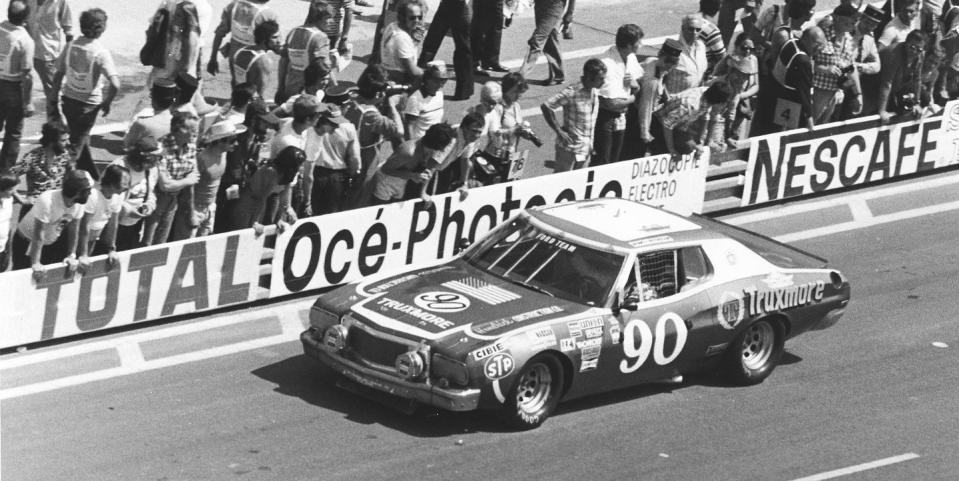
The recent announcement that NASCAR will send a car to Le Mans in 2023 caught many series-insiders by surprise.
It’s not the first time NASCAR has taken on Le Mans, as Junie Donlavey and Hershel McGriff brought their NASCAR teams there in 1976.
While neither Donlavey nor McGriff made the full 24 hours in 1976, NASCAR will be better prepared for its one-car Hendrick Motorsports entry next year.
The first thing that came to Junie Donlavey’s mind was understandable: “Did he say Le Mans? Really? Le Mans, as in that race in France. Did he just ask if I wanted to take my team to Le Mans? Really?”
Yes, in fact, that was exactly what NASCAR executive John Cooper was asking when he called the legendary Cup Series team owner in March of 1976. The stock car organization wanted to send two teams to the French road circuit for the upcoming 24-hour race, so Cooper was inviting Donlavey and mostly volunteer crew to take part.
It was a huge honor for Donlavey, who died in 2016, to represent Ford Motor Company, stock car racing, Richmond, Virgina, and the United States in the mid-summer event. “It was a wonderful trip, a special and memorable time for my team,” he said in 1976, shortly after returning to the NASCAR tour. “We saw things and did things we’d never seen or done, things we’ll probably never see or do again.
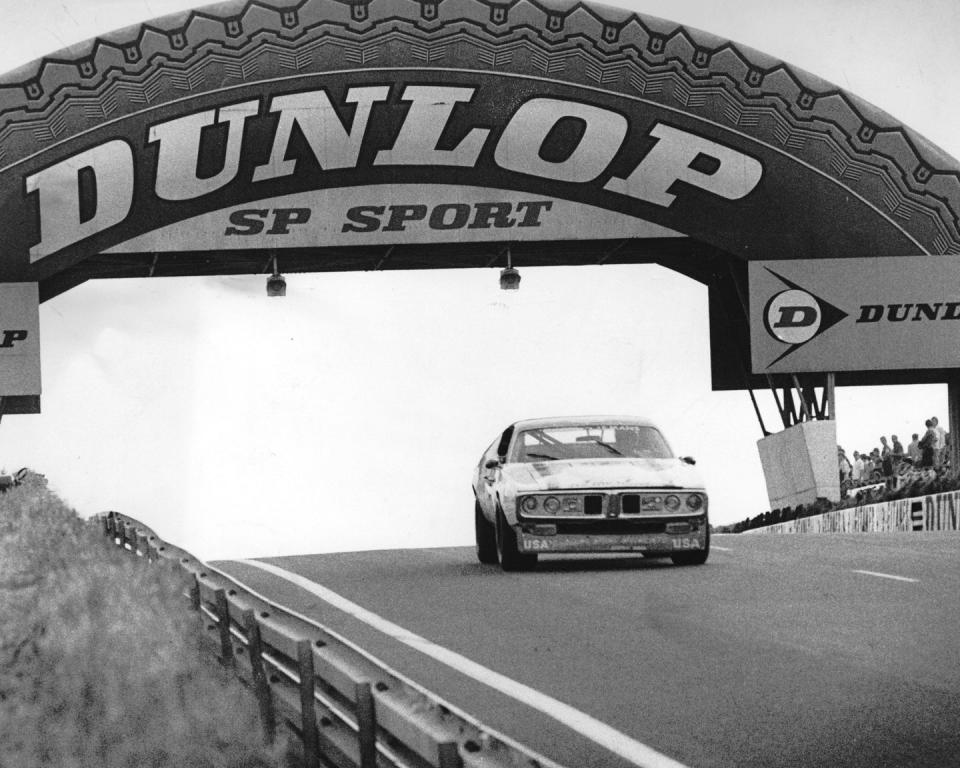
“Talk about feeling special! There we were, a bunch of guys from Richmond, Virginia, running a Ford stock car against those Porsches and Ferraris and prototypes. Let me tell you… that was the last place I ever expected to race.”
The recent announcement that NASCAR will send a car to next year’s race caught many series-insiders by surprise. With so much focus on the rollout of the Next Gen car—so far, it’s performed as well or better than expected—it seemed unlikely the suits in Daytona Beach would start another BIG DEAL project so quickly.
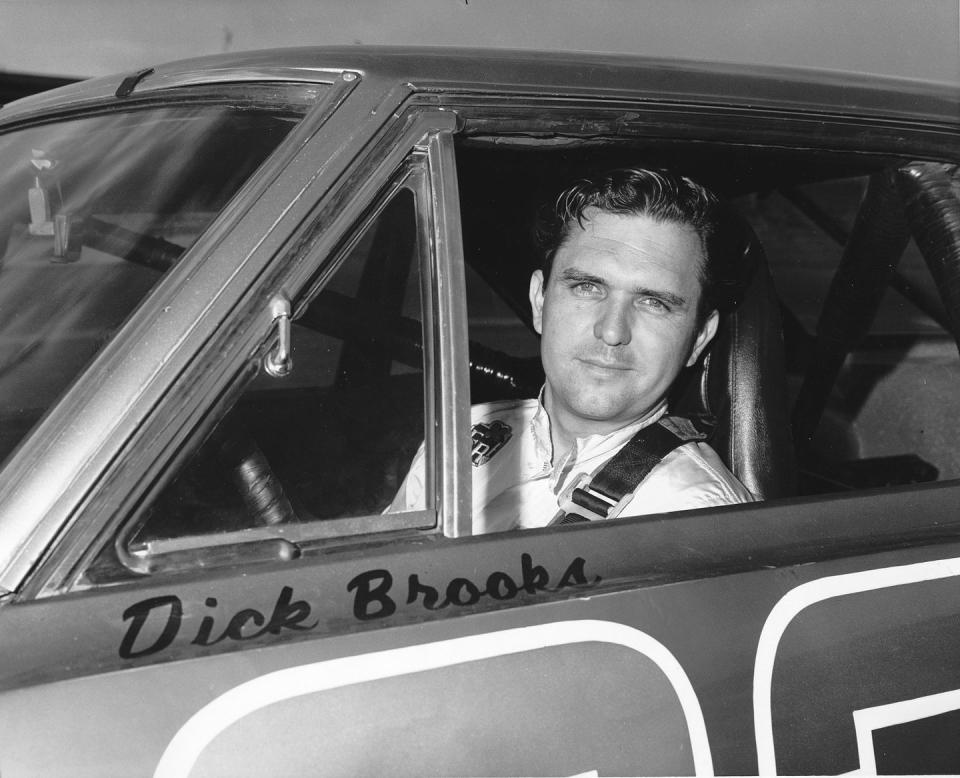
But that’s what Le Mans ‘23 will be… another heavily hyped BIG DEAL. After all, the legendary twice-around-the-clock race at Circuit de la Sarthe is among the world’s most important motorsports events, joining the Indy 500, Daytona 500, Grand Prix of Monte Carlo, and 12 Hours of Sebring. Even admitting that NASCAR to Le Mans! is primarily a publicity-grabbing headline, something as unprecedented as a Next Gen car on the 8.48-mile circuit can be nothing less than a BIG DEAL.
Except that while it might be a BIG DEAL, it’s not unprecedented.
NASCAR dispatched Donlavey’s No. 90 Ford Torino and Hershel McGriff’s No. 4 Dodge Charger to the 1976 race. Donlavey’s team featured full-time driver Dick Brooks, former full-time driver Dick Hutcherson, and French driver Marcel Mignot. McGriff and his son, Doug, would share their family-owned car. The teams brought talent and experience across the pond: Hutcherson had finished third at Le Mans in ‘66 in a Holman-Moody Ford GT40 and Hershel McGriff had run the 24 Hours of Daytona and the Carrera Pan Americana, and had 41 career NASCAR road course starts.
The teams were there to mark the 200th anniversary of France’s assistance during this country’s 1775-1783 struggle for independence. (Does the name Lafayette strike a familiar tone?) The French-based L’Automobile Club de L’Ouest began working with NASCAR founder Bill France Sr. in January of ‘75 for the ‘76 race. The result was the Grand International Class and its two stock cars that existed solely to race at LeMans that year.
In truth, the project wasn’t all that complicated. Because they were in a class of their own, the Ford and Dodge were close to race-ready right off the boat. “Basically, we didn’t have to do much to the cars to make them legal,” the 94-year-old McGriff recently said from his home in Tucson, Airzona. “Windshield wipers, side mirrors, more headlights, taillights. You know, stuff we’d need if it rained or when it got dark. Nothing we would have needed in a Cup race back in the states.”
At the finish, the Martini Porsche of Jacky Ickx and Gijs van Lennep won by 11 laps, leading 349 of 354 laps, including the final 342. Neither Cup car came close: The McGriffs finished last among 55 starters, dropping out after two laps with octane-related engine problems. The Donlavey team lasted 11 hours, completing 104 laps before dropping out with a broken transmission at 2 a.m. with Brooks on the far end of the circuit.
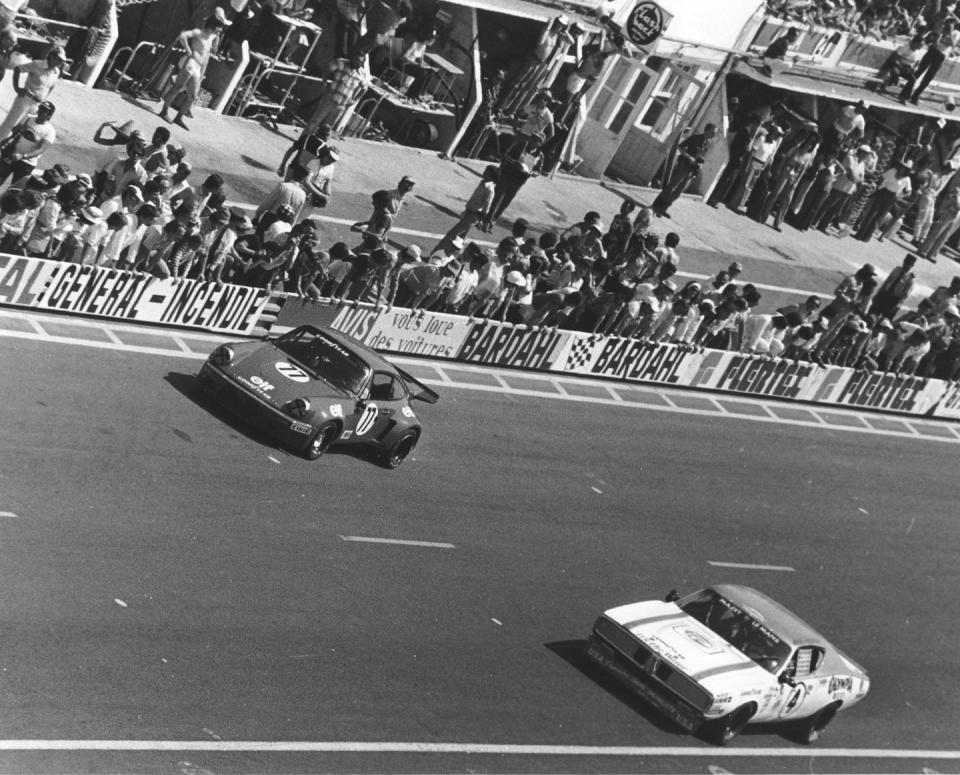
Le Mans that year followed by two weeks the Coca-Cola World 600 near Charlotte and caused the two teams to miss races in California and Michigan before rejoining the tour in July at Daytona Beach. Except for personal purchases, NASCAR and ACO covered all expenses: packing and shipping of cars and equipment, round-trip air and ground transportation, and lodging and meals.
Years later, Cooper said the whole thing began with an off-the-cuff exchange between Bill France Sr. and executives from Le Mans. “They were here for our 24-hour race early in ‘76, and Bill asked why they didn’t have a class for our cars,” Cooper recalled. “They said they’d create one if we’d send over some cars. That’s how it all started, with casual conversation among people just standing around.”
The Donlavey crew spent two days in London and two in Paris, including a memorable evening at the famous Lido nightclub. “Some of what we did there is best left untold,” Kenneth Bell, one of Donlavey’s long-time crewmen, gleefully said at the time. “Just let it go at this: We had a big time in Paris, but were happy to get to Le Mans.’ ”
They quickly realized that French fans had never seen anything like the American cars. Astonished fans surrounded them during a parade through the town and afterward, in the paddock. “Before we got there, they’d taken the cars all over France on a flat-bed truck,” Donlavey said. “People didn’t know what to make of them, being so big and painted up and all. They called them ‘le grande monster’ – or something like that. I never did learn exactly what they were saying.”
McGriff remembers how impressed the fans were when the unmuffled V8 engines unleashed their throaty growls. “For a week, in almost every paper, there was a picture of it,” he said of his Charger. “They loved it because it was big and loud and had a different engine roar. Too bad it didn’t run any longer than it did.
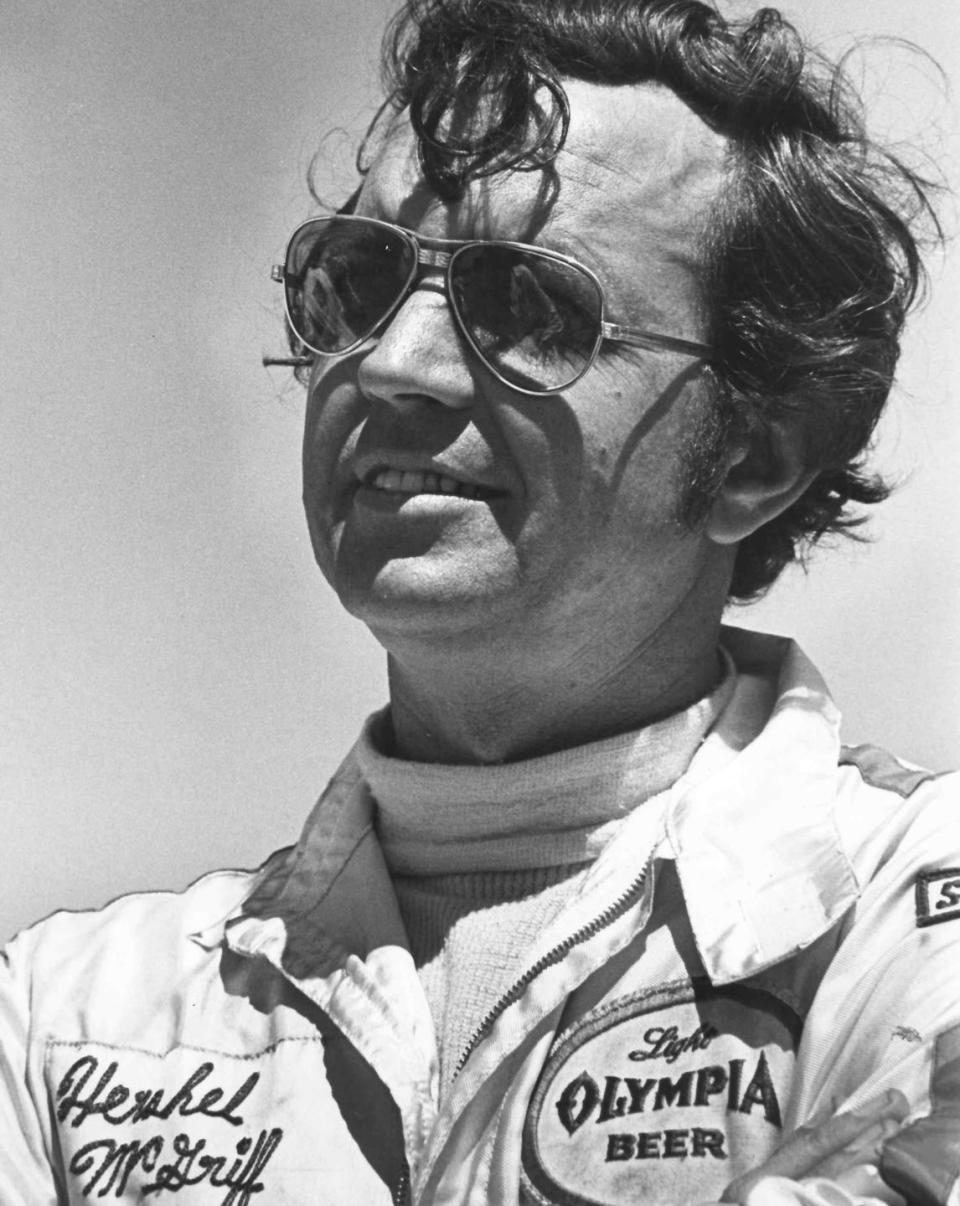
“We had built our engine anticipating 90- to 92-octane fuel, even less than we usually ran. But what we got was 80- to 81. That’s why we only lasted a couple of laps before it blew up. Junie had a 351-inch, low-compression short-track engine from Bud Moore, so the lower-octane fuel didn’t bother him. Doug and I thought our car would have been pretty good if we’d had different fuel.”
NASCAR will be better prepared for its one-car entry next year. Hendrick Motorsports will prepare a Camaro ZL1 under the direction of former championship-winning crew chief Chad Knaus. From a financial angle, corporate partner Chevrolet will do whatever it takes. Drivers will be no problem: team owner Rick Hendrick will need only to lift his phone and summon Jeff Gordon, Jimmie Johnson, current Cup Series champion Kyle Larson, noted road-racer Chase Elliott, or anyone in the Chevrolet family.
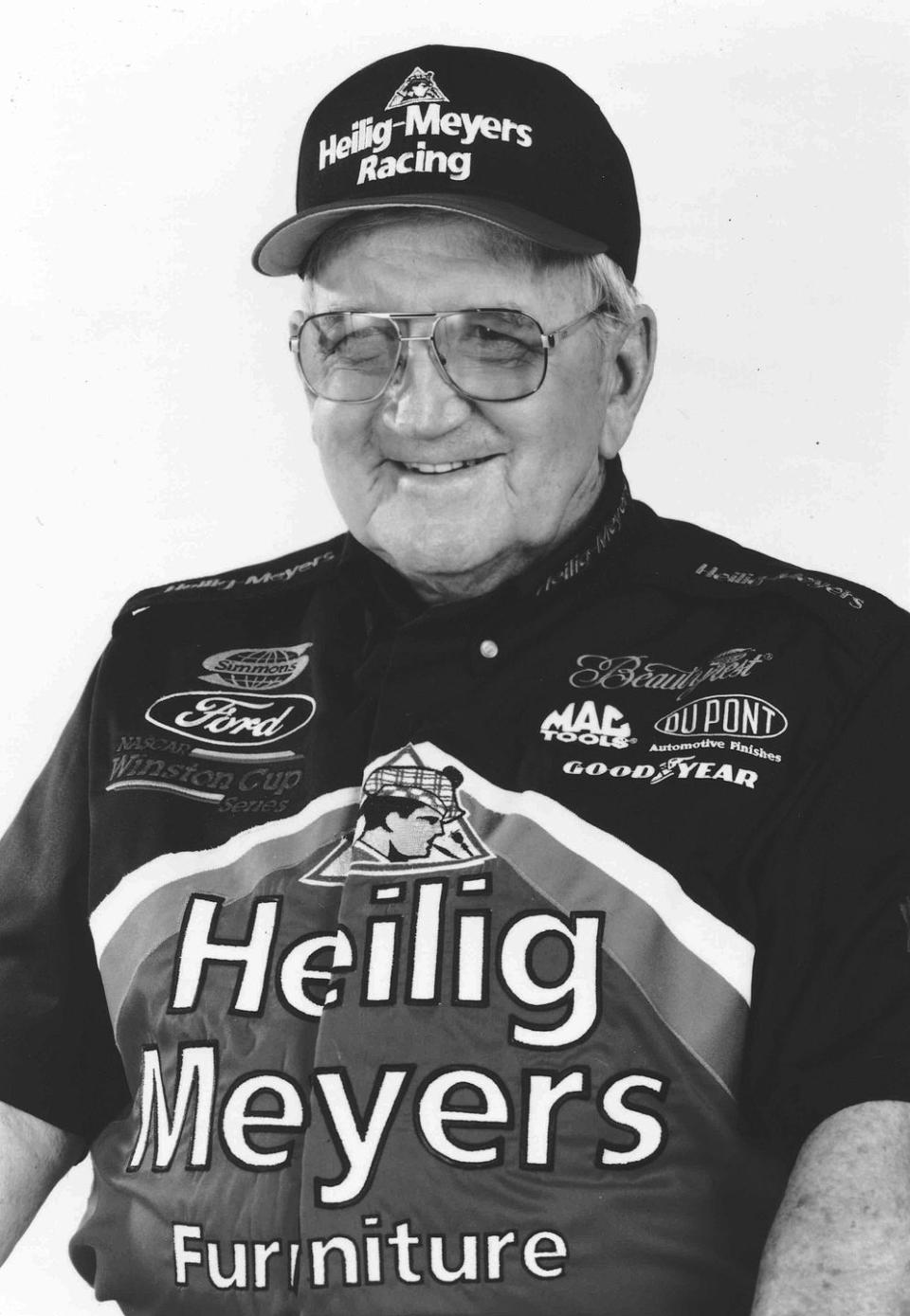
As spring aims for summer next year, NASCAR will turn up the hype and hoopla similar to how it slowly unveiled the Next Gen car. Its leadership wants nothing more than for worldwide race fans to pay attention to the latest “le grande monster” in the LeMans garage. The car has absolutely no chance of being competitive or winning – indeed, the rules forbid it from winning – but just being there is enough for NASCAR and Chevrolet.
Since 2012, the AOC has reserved a grid spot for a car testing new technology and innovation. The program, called Garage 56, offers an entryway for cars that will be judged more for their design and innovation than the ability to be competitive over 24 hours. The NASCAR entry will be scored and classified as all other cars in the official results and “win” its class … for whatever that’s worth.
Team owner Rick Hendrick says, “We are competitors and have every intention of putting a bold product on the race track for the fans at Le Mans. It’s a humbling opportunity – one that will present an exciting challenge over the next 15 months – but our team is ready. We’re not taking this lightly. This is a full-bore, full-blown effort to run 24 hours and to run competitive times.
“We’re not going over there to ride around. We’re going to put the best effort out there and run very competitively and finish the race. That’s a tall order. I feel strongly that we can do it.”
Hope springs eternal.

 Yahoo Autos
Yahoo Autos 